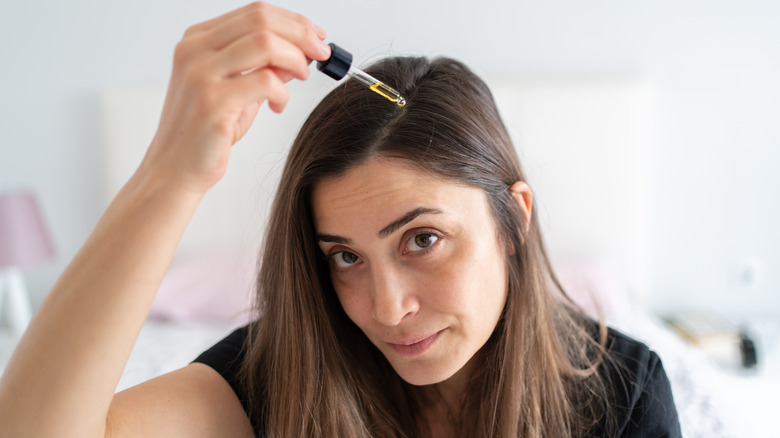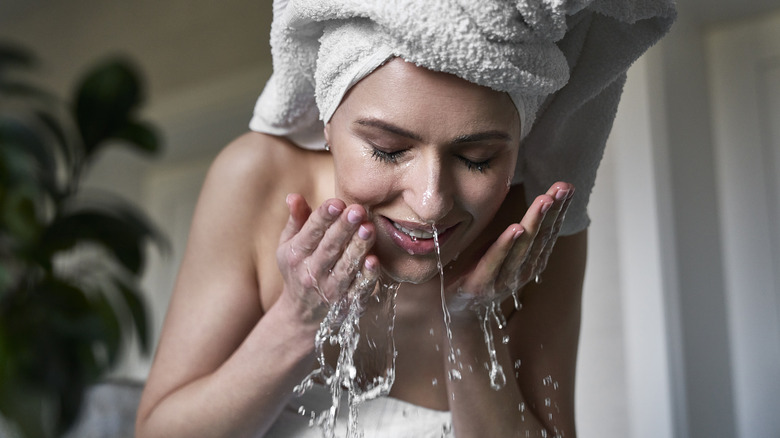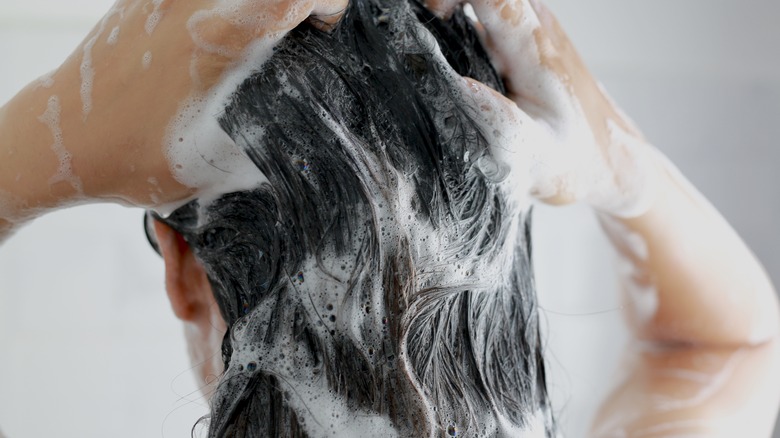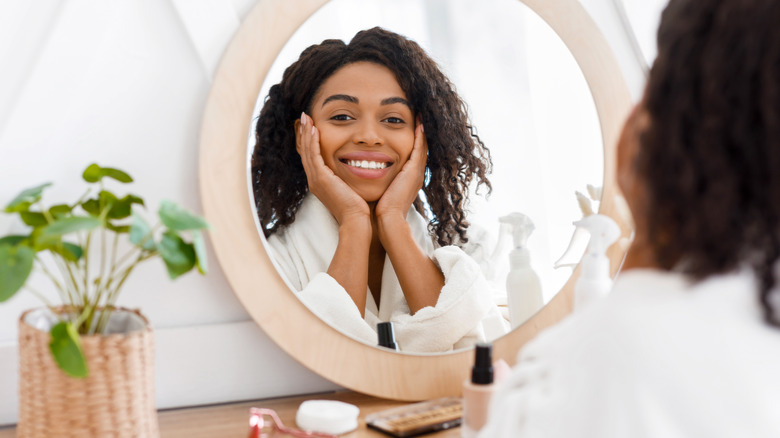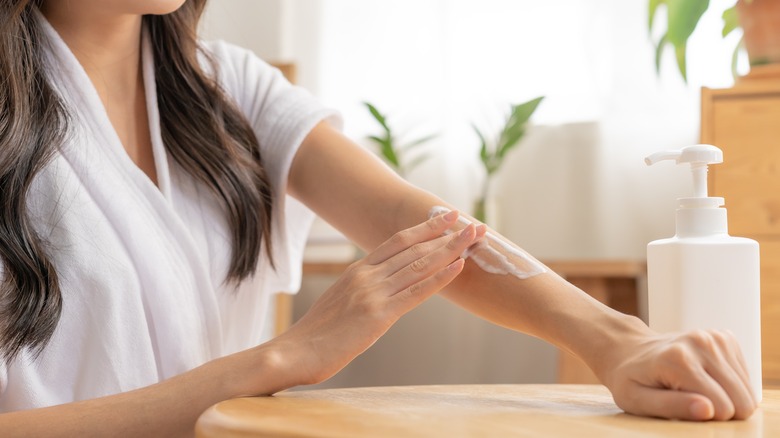Skinification: What It Is And How It Fits Into The Beauty World
In recent years, skincare's place in the beauty market has reached new heights. Skincare trends and hacks continue to dominate social media, 12-step daily skincare regimens are the norm, and things like skincare fridges and clear skincare shelves have even made their way into bathrooms. It seems like every other day, another celebrity announces they've launched their very own skincare line. Consumers put a lot of effort (and money) into taking care of their faces. And now, that level of effort has made its way to hair and body care.
As Dr. Jeanine Downie explained to InStyle in 2022, "Skincare is booming because of COVID — we were all locked inside looking at ourselves on Zoom and freaking out. Because of this, we are now paying attention to the face and body. More than ever, our body care regimens reflect that we want to wear short sleeves and shorts skirts and have our backs out."
Skinification, which has gone viral on TikTok and other social media platforms, is the name of the game.
What is skinification?
First things first, let's get to the definition. The buzz around skinification isn't just about face creams and serums. It's also about making sure everyday hair products and body products give the epidermis a boost. According to CosmeticsDesign's Donna Petretti, "skinification is the presence of skincare-inspired ingredients, trends, and claims across beauty and personal care categories." As customers have become more aware of the effects of ingredients on their skin, a number of brands have not only made a point to be clear about what is in their products, but have gone the extra mile to promote the products as "skin approved."
When we think of skincare, most of us typically think of the face only. However, the entire body is often in need of care, from scalp to toe. And so, skinifcation, more or less, is all about making sure all of your skin — not just the skin on your face — is treated right. This probably does not come as a surprise, but social media apps like TikTok have played a key role in taking skinification to the mainstream.
Skinification in haircare
One of the latest lanes of the beauty industry to undergo skinification is haircare. When some people think of washing and nourishing their hair, the physical strands are often the priority; we pick products that we hope create volume, add hydration, boost curls, and so on. However, the scalp needs love, too. After all, as Healthline notes, that's where healthy hair begins; when you take care of your scalp, your strands are sure to thank you... by looking awesome.
As Virtue founder and CEO Melisse Shaban said in GLOSSY, "The better the ingredients are, the more likely [a better] outcome appears, and the better the hair looks." Ingredients you should be looking for to ensure you have a healthy scalp that creates healthy hair include hyaluronic acid, micellar water, AHAs, BHAs, and collagen. This will not only leave your scalp happy but also help you avoid breakouts as the product rolls onto the rest of your body.
Skinification in the makeup industry
Skincare and makeup have always gone hand in hand, but there's more overlap than ever. As Net-a-Porter global beauty director at Newby Hands told Vogue Scandinavia in 2022, "Perhaps the biggest shift we've seen, and are continuing to see develop, is how for many people skincare has now become their new makeup." When people choose to wear makeup, they prefer to show more of their natural skin with a tinted moisturizer or no foundation at all.
Many makeup brands are also adding ingredients to their formulas that are more nourishing for the skin, making two-in-one products. As Sephora beauty director David Razzano explained to Vogue in January 2023, "People want makeup that performs to the standards they expect and is going to help improve their skin along the way." Ingredients that are most commonly found in skincare-makeup hybrid tinted moisturizers and concealers include hyaluronic acid, oils, and vitamins, leaving a soothing and brightening effect.
Skinification of body care
Many elaborate skincare routines are usually all about the face, but the skin on the rest of the body shouldn't be left out. Brands and consumers alike have begun to pay more mind to the ingredients in their body products. Skincare for the body is not as simple as you might think. As Soft Services co-founder Annie Kreighbaum told InStyle in 2022, "The body has so many other factors to consider when developing your formulas — what you leave out is just as important as what you put in because the likelihood of fungal imbalances, friction, and over-absorption of actives is much greater on the body than on the face."
Different amounts of vitamins, retinol, and other ingredients can be used on the rest of the body's skin, as that skin is thicker than the face and less delicate. While you may not want to go overboard with introducing these products to your body's skincare routine all at once, they can all be beneficial when slowly added to your overall regimen. Benefits such as reduced body acne, softer skin, and a brighter glow are often seen after incorporating these ingredients into your body care routine.
